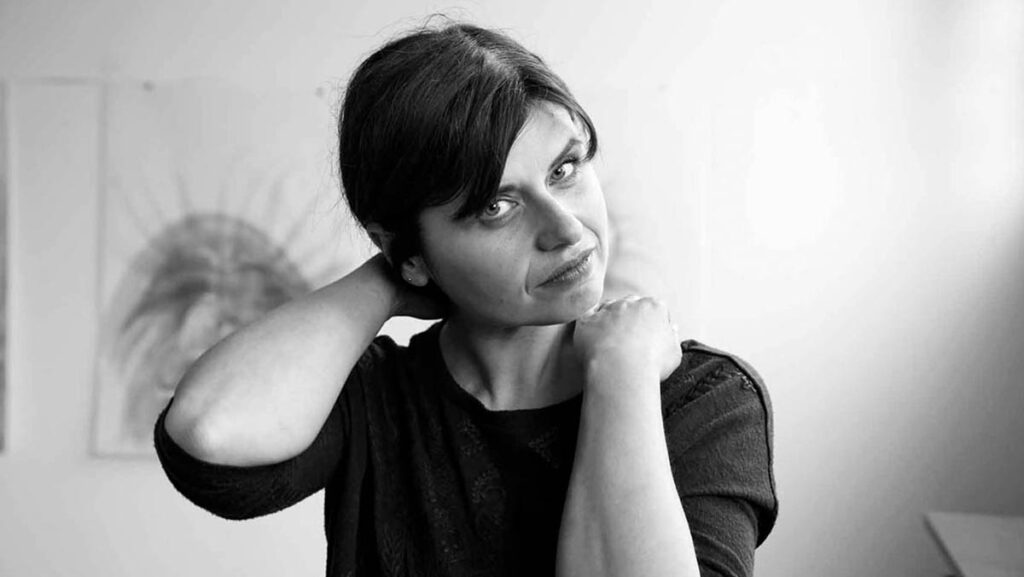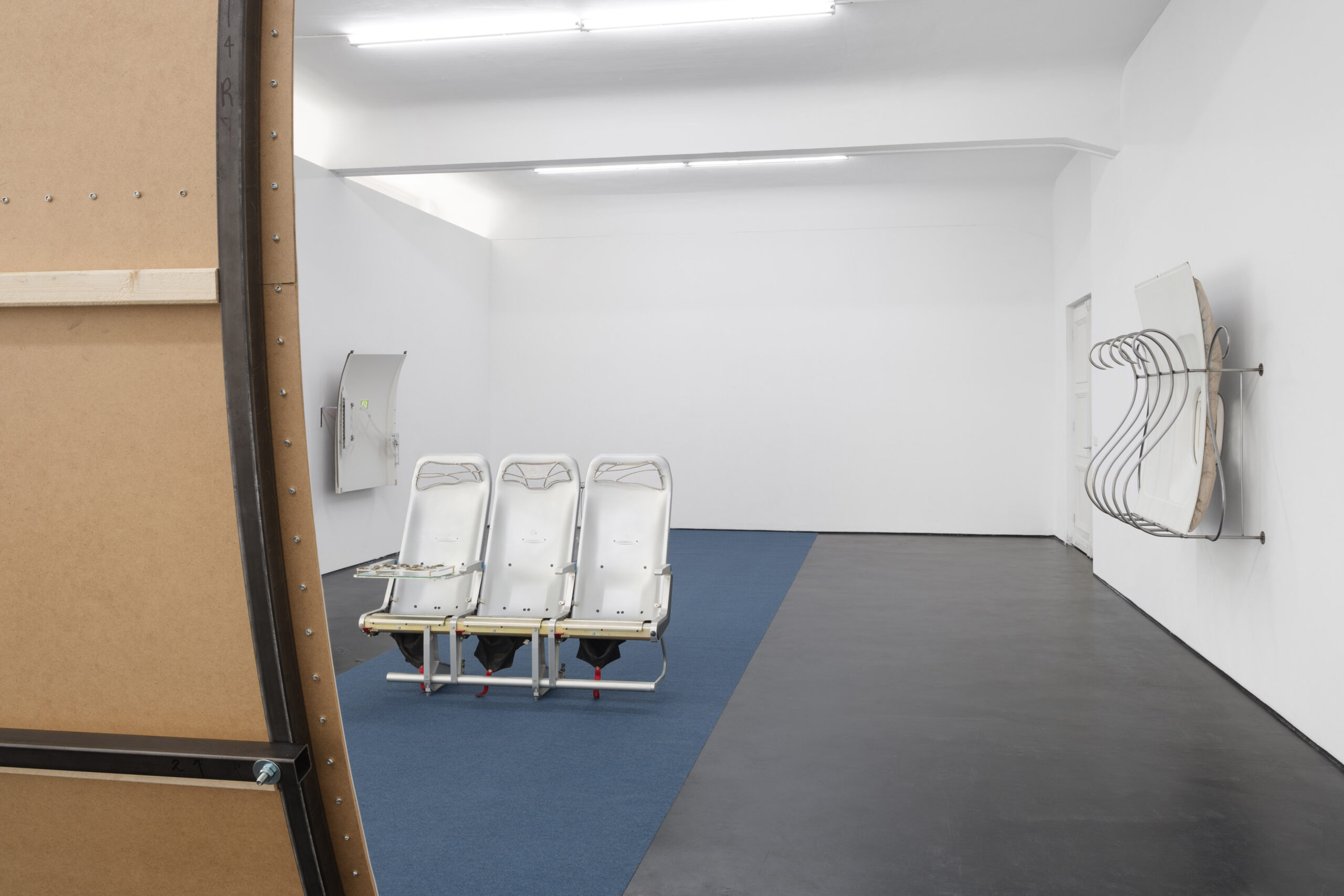
Introduce us to your beginnings in studying art in Korea and how the transition to the Czech Republic and later to Germany happened. How has this transcontinental experience influenced your later practice?
I first studied sociology at a university in Korea, but I always wanted to be an artist, somewhere in the back of my head. I quickly switched to art at university and enjoyed exploring different techniques and materials in various classes and workshops. My university had a very good glass workshop. I did a lot of experimenting with glass, like casting and so on. Then I did Erasmus in Prague, Czech Republic. After my Erasmus experience, I was sure I wanted to continue studying in Europe and I was accepted to the Academy of Fine Arts in Munich, in the class of Prof. Olaf Nicolai.
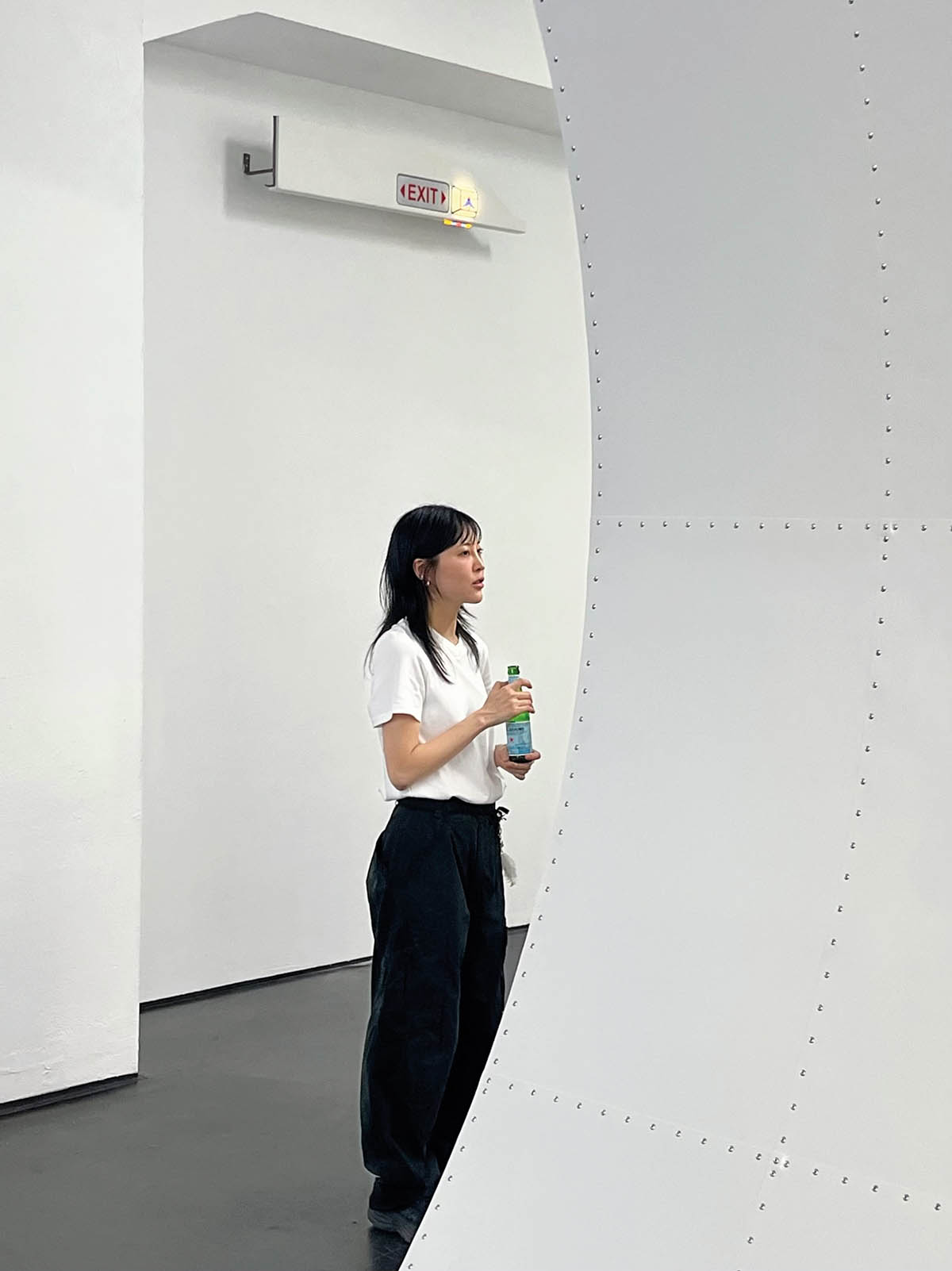
This series is your diploma work that will be continuing in the “AEROPLASTICS” expanded version of the diploma exhibited in a gallery context at max goelitz gallery. How did this collaboration come about?
I always loved their curation and often visited their exhibitions. I always thought it would be great to work with them. When they saw my diploma work and liked it, they contacted me, and that’s how it started. „AEROPLASTICS“ is a big topic that I have worked on for a long time and will continue to explore in the future. The exhibition includes not just works from my diploma but also older pieces, and I created one new work, especially for the show at max goelitz.
While reading and researching about your work, I noticed that themes of identity, belonging in society, the transitional state of being neither here nor there, and the idea of home are strongly manifest in your “AEROPLASTICS” series. Is that the case, and how do you think these points are connected?
I like ready-made objects that were previously used, such as the interiors of airplanes in this case. I also explore the idea of the exhibition itself as a journey. A previous work of mine involved a suitcase, an object meant to be on the move and traveling somewhere, not stuck in one place. This creates an interesting situation where the function of the objects is lost or changed. They represent a state of movement and travel, but they are still. This contrast between the personality of the objects and the situation I place them in mirrors my own experience of being in a weird space—not belonging, but still trying to find myself in a place.
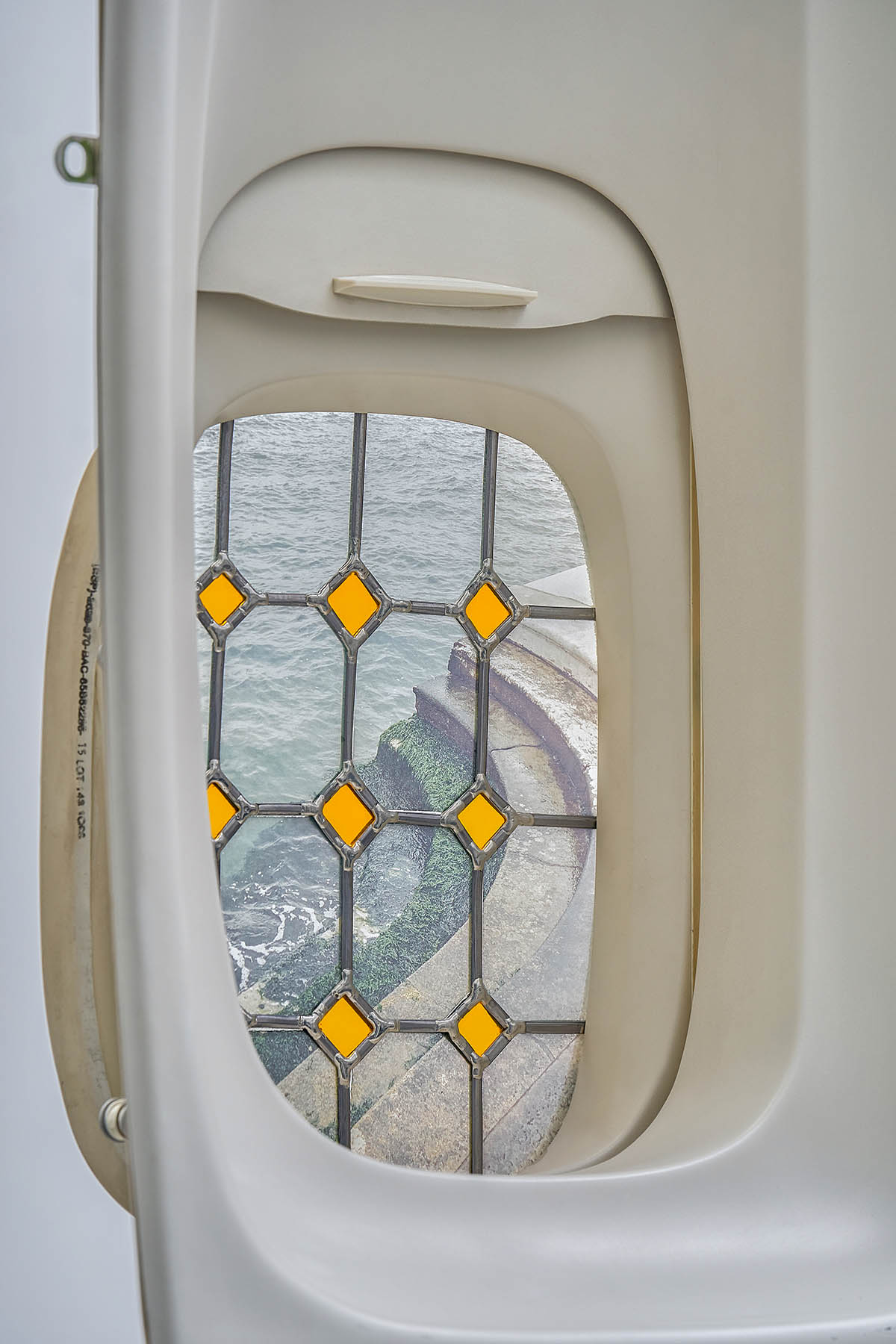
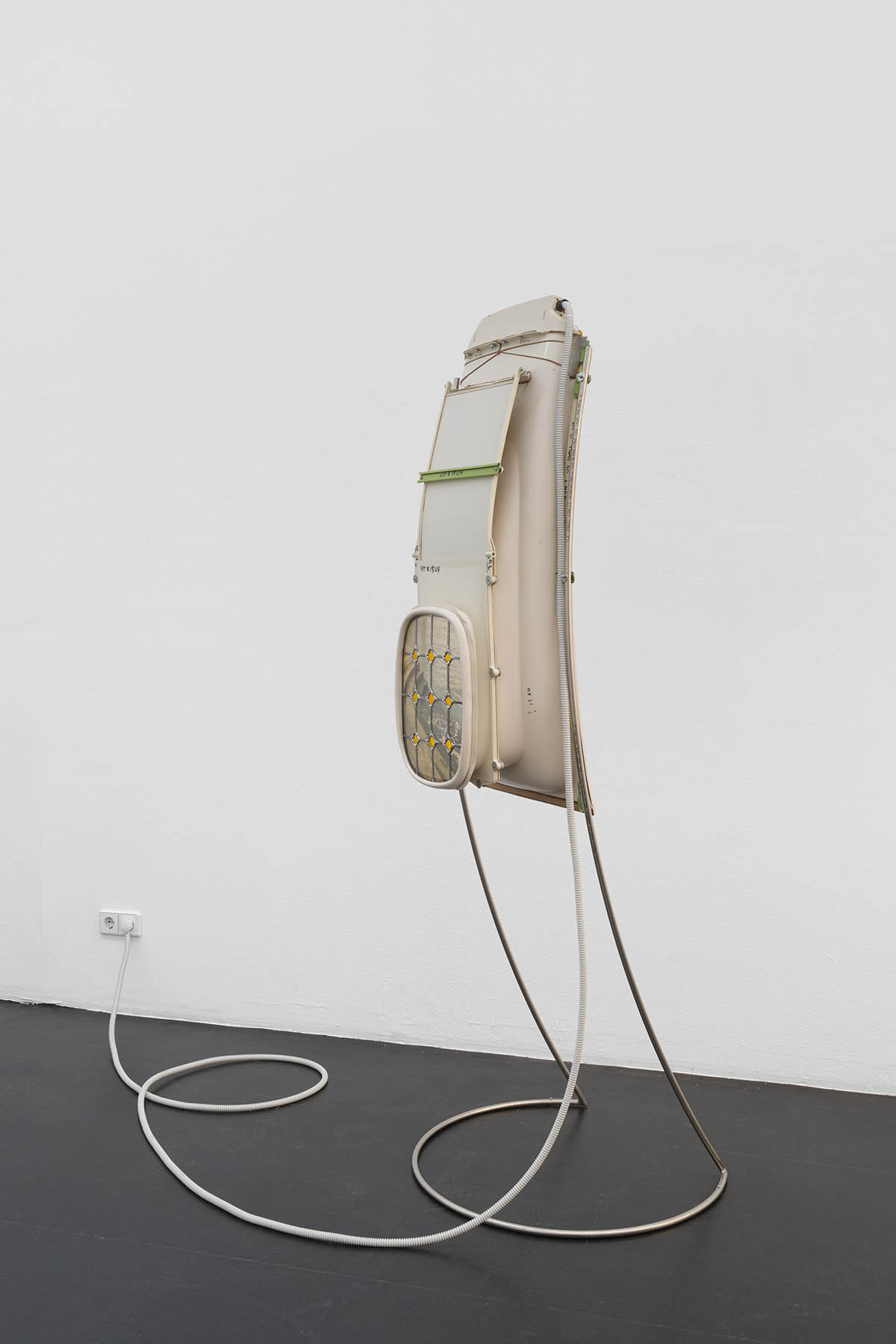
I think that this also reflects in the techniques you are using for developing your works: ready-made ceramics, glass, and metal. These are very different materials that somehow become cohesive in one object. It must be a complicated process to get them to work together. How does this “staging” of the exhibition show its narrative? How did you decide to merge high-tech aircraft components with Art Nouveau elements in your work?
The inspiration comes from Art Nouveau architecture, from elements that can be found all over the world. The stained glass windows and the metal balcony details refer to immovable elements from architectural structures, which I integrate into new contexts and provide them with a new sense of belonging. I so to say offer a new personality to the elements through recontextualization. The combination with the high-tech aircraft objects – the ready-made pieces transitions the works to the „in between“, in which they will continue to exist.
Where did you learn the stained glass technique?
I learned it in Munich. It is a special thing for Munich. It is not common to have these workshops, but here they have the Glass Malerei and Mosaic Werkstatt, as well as the Mayersche Hofkunstanstalt. These workshops produce many glass paintings and installations with different techniques that are installed even in the US, for example, at the Times Square subway station. So they are very well known worldwide.

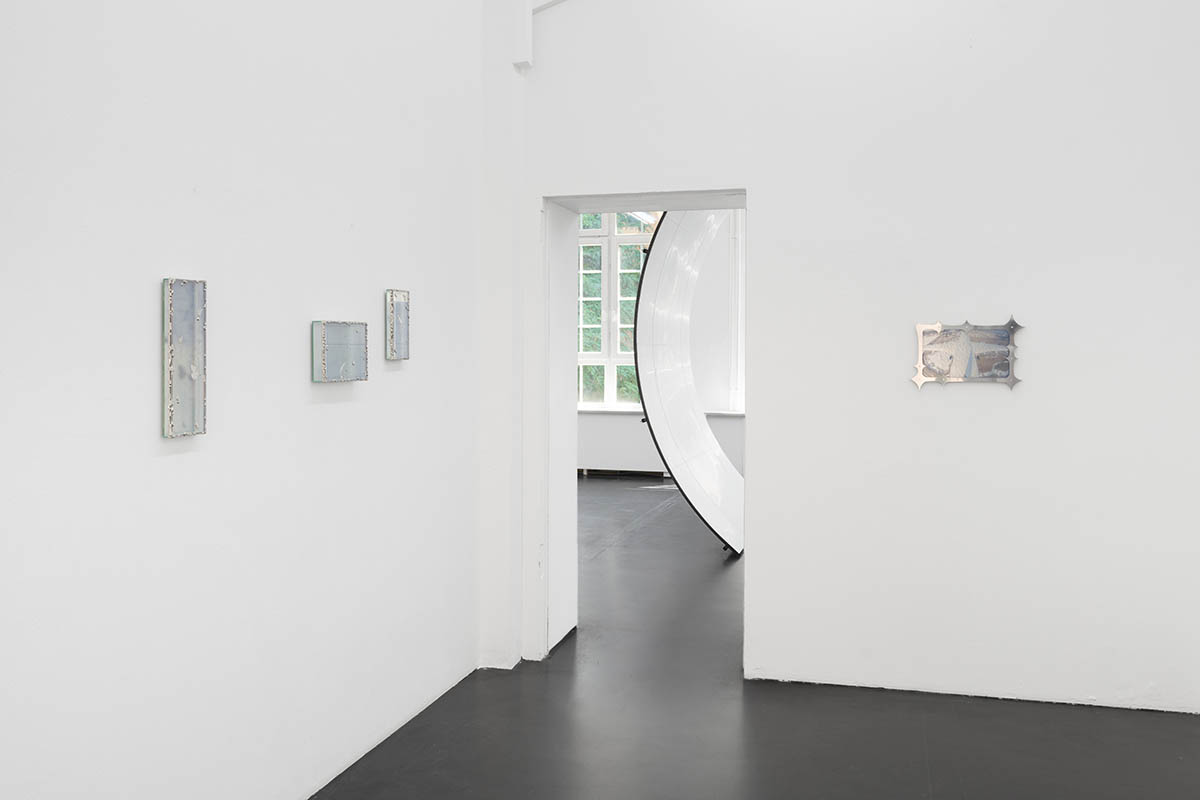
What about working with metals such as steel and aluminum? Do you collaborate with people on the production of the pieces?
I do laser cutting in metal in Korea, and then I bring the pieces by plane, which is also amusing. Then I fold the pieces in Munich, for example, for the work “Breathing Air in Seoul somewhere else” (2022)—the airline trolley. I transport a lot of pieces from Korea to Munich, which is interesting because many of the pieces in the exhibition were once on a real airplane. I don’t have a team, but I collaborate with various experts.
I was also thinking of air, not just in the “physical” space and the idea of flying and airplane context but also in the context of anxiety, and maybe this lack of air and this tension in the air. It might be best visible in the exit sign that you had in previous works, but now, I would say the exit sign is almost a marker for these moments when you want to escape and you are trying to leave an uncomfortable situation. Tell us about its poetical meaning.
Exactly. I am super happy to hear that you caught that narrative in my work. A lot of people ask me if I am fetishizing the traveling state or if I like airplanes or flying. It is not really about the excitement of travel but about my adapting to different environments. I haven’t lived in Korea for almost eight years, and I go there just once a year or so. The gap between me there and me here is getting larger. Every time I go back, so much changes. Time is running out, and things are different every time I am there. Even if I feel that I will just continue my previous stay and throw myself into the past, it doesn’t happen.
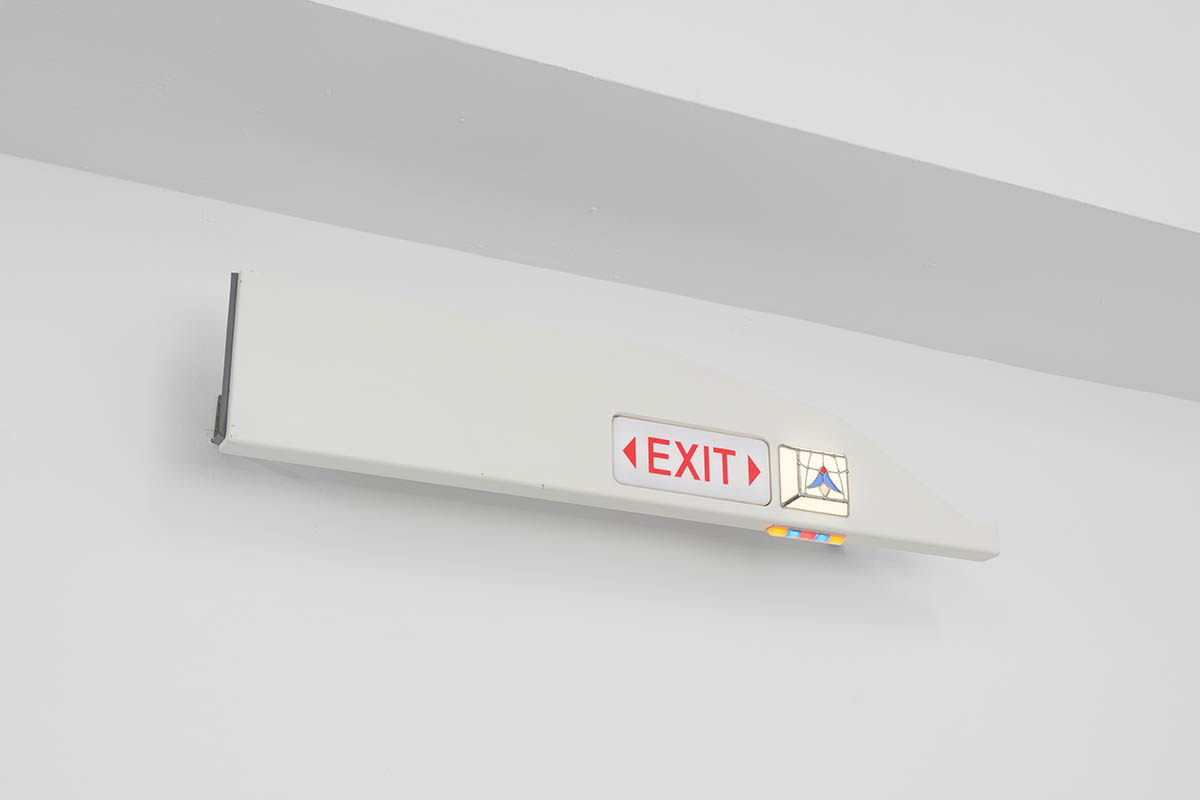
Creating a space for procrastination is something I feel AEROPLASTICS reflects. It’s about just being there and waiting to be transported.
Yes, it is a kind of waiting room connecting different realities while you are eating, sleeping, or just trying to stay in your routine. The distance between my two homes—one in Munich and one in Seoul—is 14 hours, so there is plenty of time for me to observe.

The exhibition is accompanied by a limited edition of souvenir bags. Can you tell us what we can find in the bags and what material you used in their development? Could you imagine those bags as a souvenir and the essence of the exhibition?
The airplane became a part of my life routine, so I am always interested in every detail of it. The idea came from the fact that people collect things during travel, like small airline items that are often useless, such as lotions, toothbrushes, and small sachets of salt or sugar. I wanted to make my own edition. Interestingly, these items are smaller than the actual things we use on the ground, so everything is scaled down and more transparent to be compatible with flying. They are kind of shadows of real objects, made to maintain people’s routines in the air. It was important for the concept of my edition to be a souvenir that you could take with you. So it serves as a medium for preserving memories and experiences from the exhibition AEROPLASTICS. One of the things I produced is a small sachet with a print of an Art Nouveau salt shaker and the exhibition logo on the other side. I think that shows exactly what I meant—this play on function and decoration in the object’s shadow. Then there are stickers I made out of my documentation and diary photographs. A small paper plane, made out of a print of a map locating a place near Berlin where specific airplanes are operating, is included. There was also the puking bag with the AEROPLASTIC logo and the exhibition text printed on it. Finally, there is the menu card with Art Nouveau details, a list of the works, and a description of them. I hadn’t thought about the concept of them being a souvenir of the exhibition, but yes, maybe that could be a good interpretation of the edition.
This period of Art Deco and Art Nouveau was often perceived as kitschy, but they are very tightly connected to the idea of the Gesamtkunstwerk and the merging of art and design. How has this influenced your pieces?
Often, the pieces were overdecorated, slightly losing their function. The objects I use are always about function, but I clash them with the fact that they are presented in an art context.
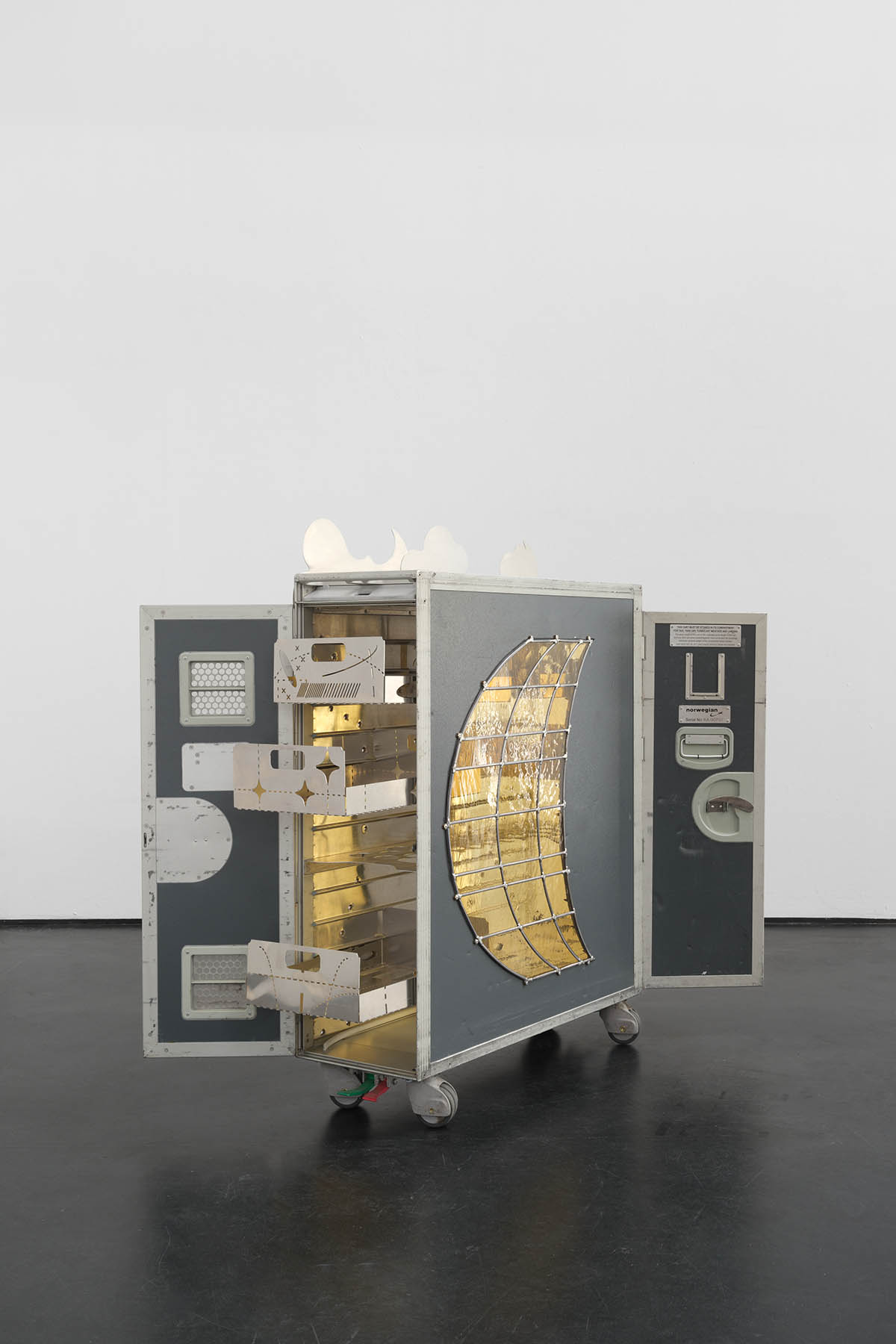
Can we talk about the work “Breathing Air in Seoul somewhere else” and its level of actual function?
As the title suggests, it is about the fact that airplanes carry air from one place to another, which relates to the identity you bring with you. I took it as a metaphor, but this object still functions, and I carry many of my works inside it when I transport them. However, the fragile glass, with its mesmerizing detailing and sharpness, is not ideal for storing something. The drawers don’t slide well; it’s more of a shadow of a real trolley from a plane. It also includes a different kind of map laser cut in metal—a map that looks more like the moon but is part of a global map. There is also a map that pilots use, with coordinates and routes. I often use these maps and translate them into my stained glass works; while they are less visible, the same starting point is there.
Are you more analog or digital?
I would say I am more of an analog type. I collect a lot, write a diary, and draw. I also like to have things in physical form, so I print my photographs and research resources. I have sketches for objects I am making, but they change a lot through production. Sometimes they look as I expect, and sometimes they’re far from it, but I like that. I always check the boundaries of materials and how well they can work together. I take a lot of references from traveling to unfamiliar places. When I travel, everything around me is new, and I am more present, which makes me very inspired and aware.
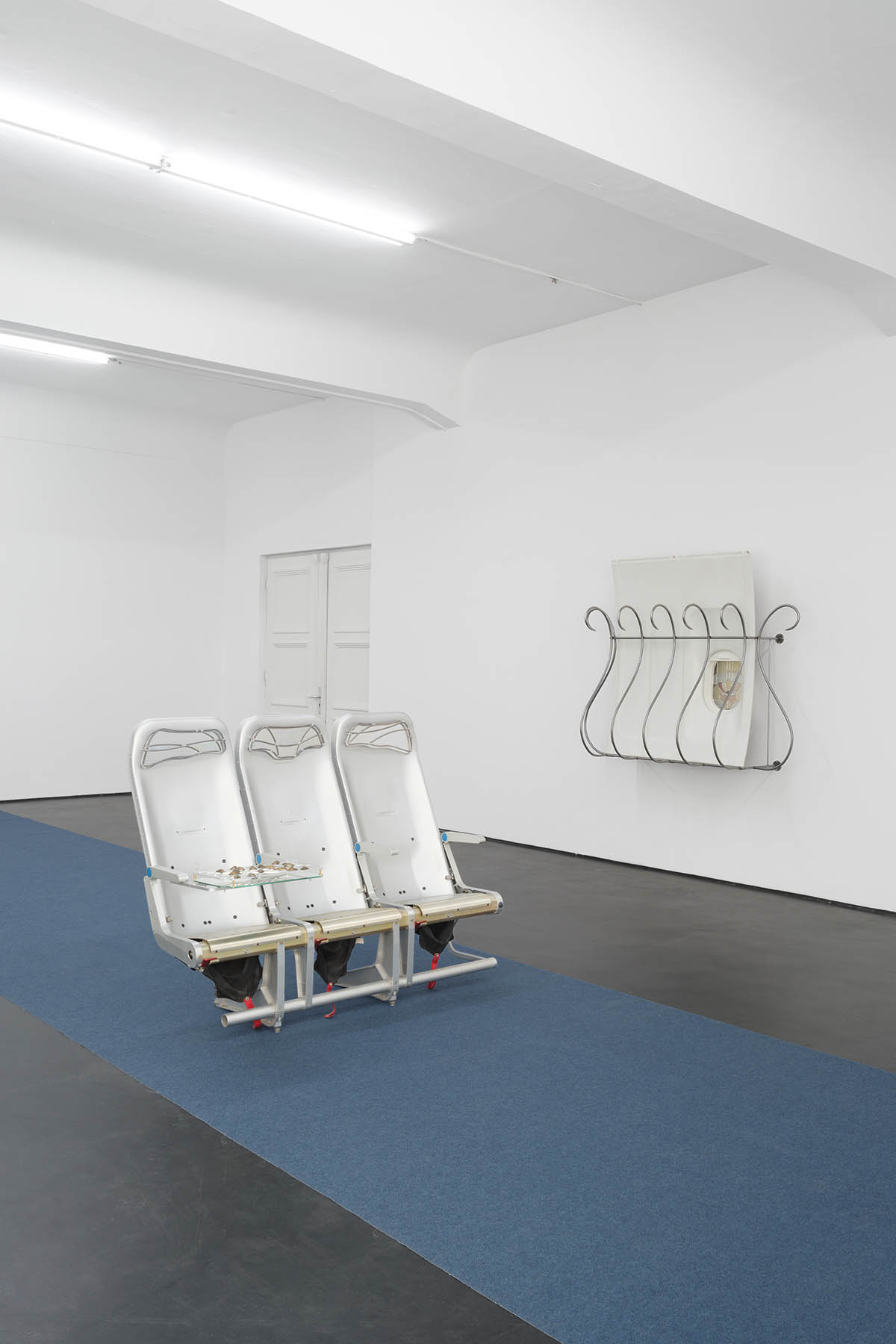
Your titles are almost always statements. How do you come up with them? For example, “Eight miles above sea level, 4974 miles, and 16 hours to reach you.“ It is very poetical and specific, and I could imagine it is an entry from your diary.
Exactly, they are diary entries. The thought for this one came to me while I was thinking about my family. The miles in the title represent the distance between my two homes—one in Munich and one in Seoul.
And how did the title AEROPLASTICS come about?
All the work titles are very poetic, and I needed some words to bind all the works together. I researched scientific facts and NASA information and found out that there is an actual word for the plastic material only used in building airplanes and rockets. It is made out of a special chemical combination that is not flammable; it is super light but also super strong. So it fits perfectly; it is fragile but also strong enough to survive, but it is also somewhere else for something else. It is not designed to be in everyday life or in the specific setting in which the works are about.
Tell us about the mussel’s detail that is accompanying the work “Eight miles above sea level, 4974 miles, and 16 hours to reach you”?
I cast mussels out of bronze. Mussels grow everywhere on the globe, but they travel via huge cargo ships. When a cargo ship transports something, it takes a long journey to another continent. To balance or level themselves after unloading their shipment, they take water from another side of the globe and bring it back to its original place. Small animals are included in this process, having long journeys without knowing. I feel like a mussel in some way.
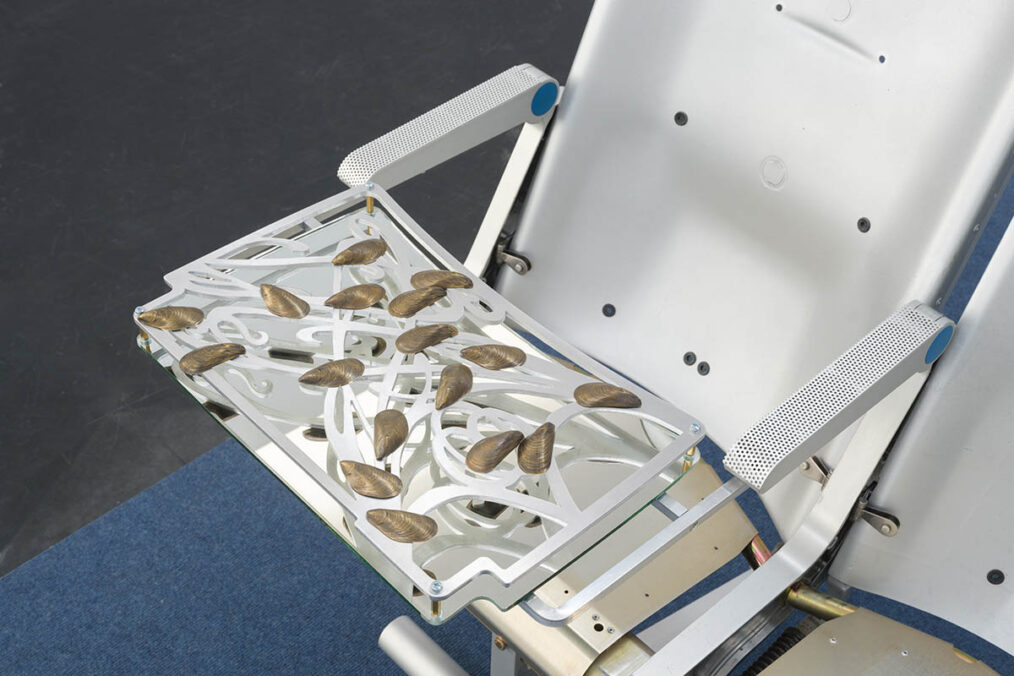
Introduce us to your upcoming projects.
I have multiple group shows coming up in autumn, first as part of Various Others, my work was selected by an international jury to be on view in the exhibition „Carrying the Earth to the Sky“. In the following week, I will be part of the Debütant*innen group exhibition One step beyond at the Eres Stiftung, also in Munich. For October I am redesigning and putting up my work in one hotel room at the Mariandl Hotel in Munich, it is an ongoing exhibition project with a long tradition under the title „Zimmer Frei“. I am also working on my first publication, which is scheduled for the turn of the year. The publication will also be accompanied with a limited edition.
Solo exhibition: Ju Young Kim. AEROPLASTICS
Opening: Thursday, 27 June 6 – 9 pm
Exhibition duration: 27 June – 27 July 2024
Address and contact:
max goelitz
Rudi-Dutschke-Strasse 26, 10969 Berlin
www.maxgoelitz.com
Ju Young Kim’s (*1991 in Seoul, KR) first presentation at max goelitz in Berlin addresses transitional states and transit zones by transforming industrial transport modules from airplanes into symbolically encoded works. For her expansive installation, Kim expands her diploma project AEROPLASTICS with newly created works and places them in a new exhibition context. www.yuyoungkim.de, www.instagram.com/yuuyoungkim/




